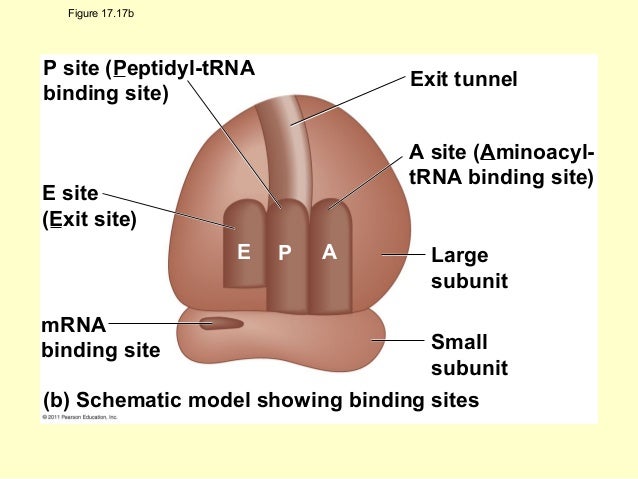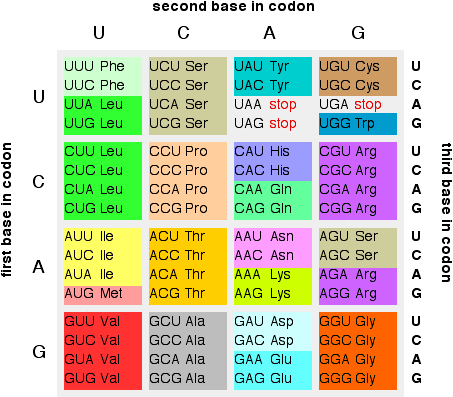Act I: Initiation
For the process of initiation to start, energy from the hydrolysis of GTP is needed. Proteins are made in the ribosomes of a cell. A ribosome has two parts, a smaller one and a bigger one. These parts are formed by the rRNA (ribosomal RNA). The smaller section of the ribosome looks for a special genetic sequence that is known as the start codon. A codon is a series of three bases that codes for a specific amino acid. The start codon is 5'AUG3' and it codes for methionine (Met). It attaches itself to the 5' end of the mRNA and moves the mRNA along until it finds the codon. Then, in the bigger part of the ribosome, tRNA arrives, with the help of an initiation factor, with the proper amino acid to build the protein.
Act II: Elongation
The larger unit of the ribosome has three binding sites for tRNA. The P site is where the tRNA holds the growing polypeptide chain, the A site is where another tRNA carries the amino acid for the next codon, and the E site is where the tRNAs leave the ribosome.
Elongation happens in three steps. First is codon recognition, where elongation factors help with hydrogen bonding between the mRNA and tRNA. On the tRNA, there is a section known as the anticodon. The anticodon which is contains the complementary base pairs of the codon. (eg. the start codon, AUG, would have the anticodon of UAC) The anticodon helps the tRNA attach to the right place on the mRNA. Next is the peptide bond formation in which the rRNA helps form a peptide bond between the amino acids in the P site and the A site. This separates the polypeptide chain attached to the tRNA in the P site to the tRNA in the A site. Last is translocation, where the tRNA in the A site is moved to the P site, and because the anticodon remains bonded with the mRNA, the mRNA moves along with it, allowing for a new tRNA with the right amino acid to bond in the A site. At the same time, the tRNA that was in the P site moves to the E site and is released. This ensure that all codons are read 5' to 3'. This process is repeated again and again until the entire protein is made.
Codons are made of three different bases, the last position of the codon is called the wobble position. This wobble is the second way to help decrease mutations in a protein. Usually, in a codon, the most important bases are the first two, if there is a mistake in the last one, it sometimes does not result in a faulty protein. The table below will help illustrate that.
As seen, more than one combination of bases can code for the same amino acid, allowing for some room for error.
Act III: Termination
Termination occurs when one of three stop codons approaches the A site. The stop codons are UAA/UAG/UGA. A release factor binds to the stop codon and hydrolyzes the polypeptide bond between the chain and the tRNA. This frees the protein from the tRNA and the entire translation complex dissociates.




No comments:
Post a Comment